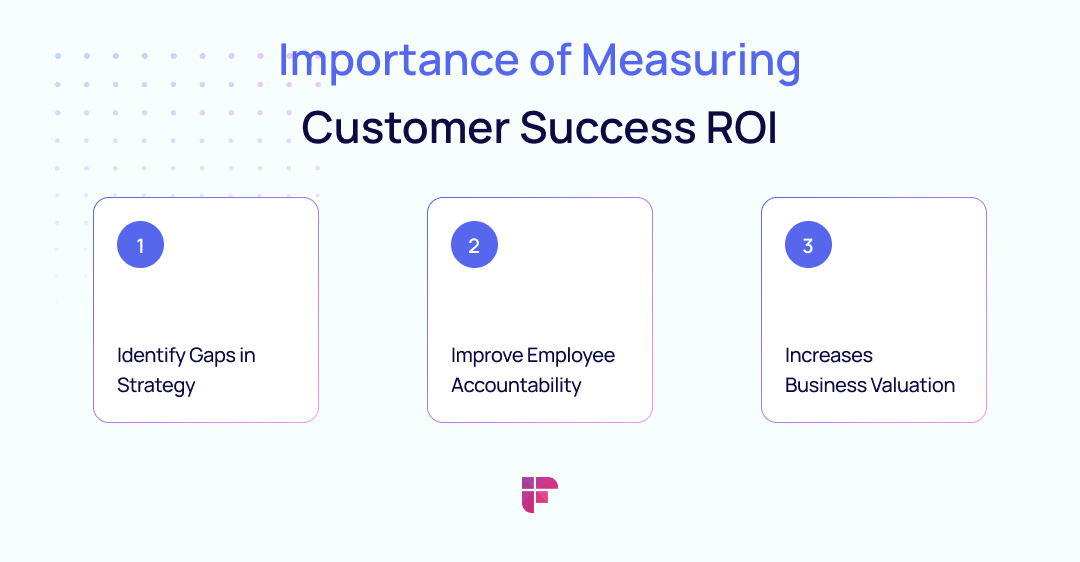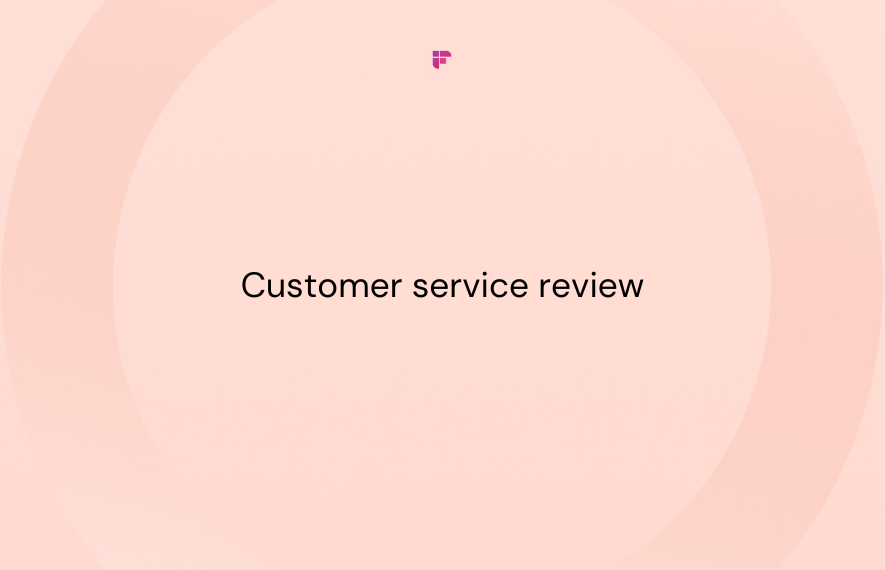In a customer-centric economy, you need to provide valuable and personalized solutions to customers. Customers expect streamlined onboarding and customer experience so they can opt-in without any hurdles.
Now, companies invest large chunks of resources in delivering great value to their customers. An effective way to measure these efforts is customer success ROI.
In this article, we’ll understand the importance of customer success ROI, how to measure it, and tips to increase it over time.
Importance of Measuring Customer Success ROI

Customer success is a critical function in every business, be it a Saas startup or a large organization.
But the truth is, setting up a customer success vertical in a company is a huge cost. The expense of building a customer success team, crafting a CS strategy, hiring specialists and chief customer officers, and deploying customer success softwares, etc., all adds up.
Yet, the investment is worth it as it significantly impacts the bottom line, i.e., revenue, customer base, and customer loyalty. But businesses can only invest in customer success if they can quantify the results.
So, let’s understand the importance of measuring customer success ROI:
Identify the Gaps in Strategy
Measuring the ROI of your customer success efforts can immediately tell you the efficacy of your strategy.
While preparing a report showcasing your ROI, ensure it includes the right metrics. KPIs like NPS, retention rate, adoption rate, ARR, etc., are vital metrics for evaluation. Figuring out gaps using these metrics will help you pinpoint the problem areas.
Improve Employee Accountability
Evaluation of customer success ROI builds an accurate picture of the performance of the entire team. It helps to separate the vital skills in employees that massively impact the outcome.
In this way, CS reps as well as CS managers, build accountability for their work. Annual reports depicting the customer success ROI show how the efforts of the entire CS team paid off.
Adds up in Business Valuation
The two most vital metrics in customer success are customer acquisition cost (CAC) and customer lifetime value (CLV).
Customer success ROI is determined by an overall comparison of CAC with CLV. If your CLV is more than the CAC, your business valuation increases. Investors will be interested in your venture as a higher CLV shows the overall profitability of the business.
How to Measure Customer Success ROI

Customer success ROI is measured by quantifying all the CS efforts to keep customers happy.
Every investment in customer success ultimately impacts the customers.
Thus, to measure customer success ROI, you need to measure the end results the customers are generating.
Customer Lifetime Value (CLV)
Customer lifetime value is a prominent indicator of your business profitability. With the help of CLV, you can estimate how much revenue a customer will generate during his association with the company.
Further, multiplying CLV with your total customer base will give you estimated revenue for that year.
Business Expansion
This includes upsell and cross-sell activities and must be measured while taking customer success ROI into account. The total revenue generated due to account expansion is a critical factor while estimating CS ROI.
Customer Retention
The annual retention revenue from customers is a great way to determine the effectiveness of your CS efforts.
To evaluate, consider the annual revenue churn rate and compare it with the revenue retention rate for the same year. This will tell you if your CS strategy is producing significant results or not.
Referral Revenue
Loyal customers ignite word-of-mouth marketing and impact the revenue earned through referrals. Brand advocates can be identified and measured via an NPS survey that asks new customers if they have come through a referral.
The total value these referees will produce should be evaluated to calculate customer success ROI.
To measure customer success ROI, calculate:
- Total CS cost = Employment cost of CS team+ CS automation tools + Customer loyalty program, etc.
- Total CS revenue = Customer retention revenue + Account expansion revenue + Customer referral revenue
5 Ways to Improve Customer Success ROI

Improving customer success ROI means improving customer experience and customer lifetime value.
Boosting your CS ROI starts with a shift to efficient customer success strategies. By understanding data and tracking experience, you can achieve business goals and higher customer engagements.
Here’s how:
1. Bring your Data to One Place
Deploy a robust customer success software that collects data from various touchpoints like financial, product, support, customer experience, and customer success, and compiles it in one place.
This will help you identify the trends and issues that are hindering the processes. Use Customer 360 view (most CS tools offer this feature) for an eagle eye into customer health score and engagement metrics.
2. Track Customer Experience
Customer experience tells us about the product experience of the users and their intended goals. Tracking these metrics helps in understanding pain points and aligning the solutions to them. For this:
- Segment customers and record how they’re doing at each stage of the customer lifecycle
- Extract insights from customer health score
- Create alerts and warnings to identify potential risks associated with losing the customer
- Deploy metrics and KPIs at each stage of the buyer’s journey
A potential way to improve customer experience and enable seamless onboarding is identifying gaps in current service.
You can achieve this by regularly communicating and documenting customer’s concerns. Documenting this conversation is a vital way to pick opportunities in customer experience.
Use Fireflies.ai in your meetings/calls with customers to automatically create rich notes of the entire conversation. Then, search across these notes using smart filters or collaborate with managers to identify roadblocks.

3. Share Assets and Best Practices
Align your team with a standard set of best practices and proven strategies to improve their on-site performance.
While hiring and building a CS team, share action-oriented assets to equip them with the right skills and methods.
This will reduce the time taken to solve a query and enhance the overall customer experience. Include the following:
- Onboarding tips, steps, processes, and expectations
- Q&A for Customer Adoption
- Structure to follow before your kick-off a call
- How to manage the renewal process
- How to deliver a standard contract
4. Turn Data into Insights
Raw data won’t help you improve customer success ROI if you do not map out trends to optimize your CS strategy. Information about the customer is only helpful if it’s linked to an action plan. Do the following to leverage data:
- Deploy a system that helps to automate your processes
- Set up standardized steps for CS reps and managers
- Optimize campaigns to reach out to the right customer segments at the right time
5. Enable Customer-Centric Strategies
Customer-centric strategies work only when applied to the entire organization. It should not be limited to the CS team; instead, it should be an organizational value.
However, CS teams should share valuable insights, reports, and assets with every team in the company for a standard approach.
- Share KPIs and goal reports with managers and executives
- Track customer usage data and work with the product team
- Identify brand loyalists and sync those with marketing
- Collaborate with finance to update contracts, and renew customers on time
Focus on Customer Experience
ROI is a metric to determine how effective your strategies and methods are; whereas, customer experience is the actual value your company provides to the customers.
Using proven strategies, automation tools, best practices, and data-backed decision-making enables CSMs to improve customer success ROI.
Read Next:








